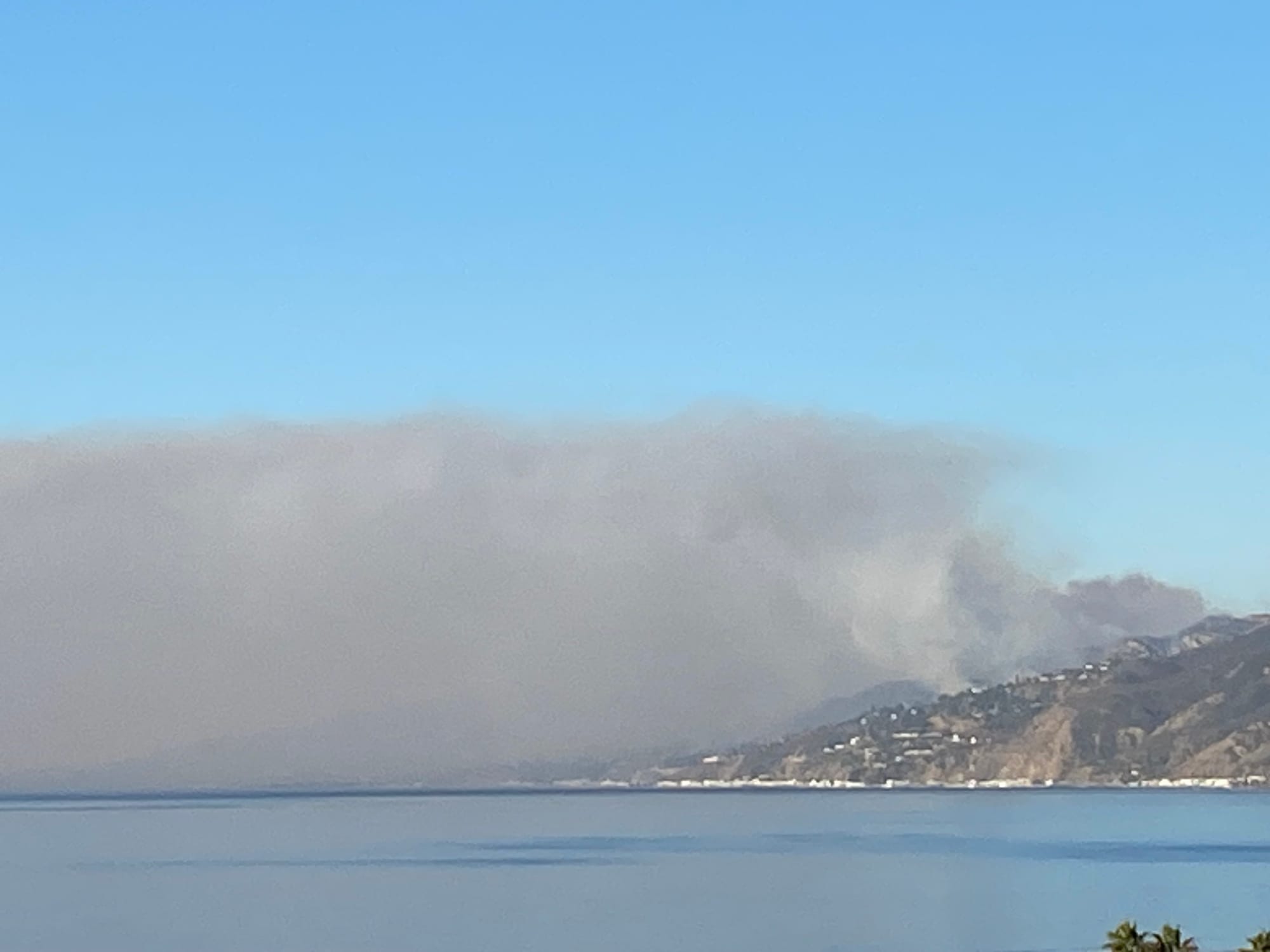Thousands of Southern California residents were under evacuation orders Tuesday as firefighters battled a wind-driven wildfire in Malibu that burned near seaside mansions and Pepperdine University, where students sheltering at the school's library watched as the blaze intensified and the sky turned deep red.
"Just seeing the flames grow and seeing that bright red color of fire just get brighter and brighter and brighter — it was so scary," student Gabrielle Salgado told ABC 7. The university later said the worst of the fire had pushed past campus.
It was not immediately known how the blaze, named the Franklin Fire, started but Los Angeles County Fire Department officials estimated that nearly 3 square miles (7.7 square kilometers) of trees and dry brush had burned and structures were threatened.
The fire burned amid dangerous fire conditions because of notorious Santa Ana winds expected to last into Wednesday. The evacuation order encompassed about 6,000 people and more than 2,000 structures, ABC 7 reported, attributing that information to fire officials.

An evacuation order has been issued for the area east of Malibu Canyon Road and South of Piuma Road. Residents in the zone are being told to leave immediately and contact 9-1-1 if they need help evacuating. People outside the zone are being told to avoid the area and to keep Highway 1 clear during this time.
As of 3am, the City of Malibu said the fire had as spread south across PCH to Malibu Road near Webb Way, and across PCH into the Malibu Pier area. Malibu Pier and other structures were impacted. Structures are impacted on Malibu Knolls Rd and Sweetwater Cyn.
A damage estimate was not available, but "it's certain some number of homes are definitely going to be badly damaged," Matt Myerhoff, a spokesperson for the city of Malibu, told the news station. He said the fire moved south, jumping over the famous Pacific Coast Highway and extending all the way to the ocean, where large homes line the beach. At one point, it had threatened the historic Malibu Pier, but the structure was protected and is intact, Myerhoff said.
Pepperdine canceled classes and finals for the day and there was a shelter-in-place order on campus. Helicopters dropped water collected from lakes in the school's Alumni Park onto the flames.
"The university understands the worst of the fire has pushed past Pepperdine. However, there are smaller spot fires on campus that are not threatening life or structures, and fire resources remain on campus to address these spot fires as they occur," Pepperdine posted in a statement online.
North to northeast winds were forecast to increase to 30 to 40 mph (48 to 64 kph) with gusts up to 65 mph (105 kph) expected, the National Weather Service's office for Los Angeles posted on X. Power to tens of thousands of people had been shut off by Monday night as utilities worked to mitigate the impacts of the Santa Ana winds, whose strong gusts can damage electrical equipment and spark wildfires.
Santa Anas are dry, warm and gusty northeast winds that blow from the interior of Southern California toward the coast and offshore. They typically occur during the fall months and continue through winter and into early spring. The weather service issued a red flag warning for high fire risk with a rare "particularly dangerous situation," or PDS, designation starting at 8 p.m. Monday into Tuesday for Los Angeles and Ventura counties.
The new fire comes about 6 years after the devastating Woolsey Fire.
In hot, dry winds, amid drought conditions, the Woolsey Fire of November 2018 spread rapidly through the Santa Monica Mountains, burning nearly 100,000 acres of parched wildlands and neighborhoods alike. The fire killed three area residents.
Experts after the fact described Woolsey as the “largest, fastest wildfire disaster in County history.” Wind gusted up to 50 miles per hour, allowing the fire to “jump” the eight-lane Ventura (101) Freeway from the San Fernando Valley into the Santa Monica Mountains. From there, it burned all the way to the ocean in a matter of hours.
The fire was a natural disaster compounded by layers of real and perceived human error and ineptitude: from the powerlines that sparked the blaze to the botched evacuation and the inability for fire engines to navigate the mountains or communicate while power was out, many elements combined to make it “one of the most devastating wildfires in the entire history of the county,” according to then Supervisor Sheila Kuehl.
Before embers had cooled, public outcry arose alleging failure by all levels of government. In response, LA County Supervisors launched an investigation into the man-made issues surrounding the fire — from preparation to emergency response and everything in between — commissioning an extensive after-action report, which came in the form of a 203-page review by the independent consulting firm Citygate Associates, LLC. Published in November 2019, that review also included 86 recommendations for improvements.
Jae Hong, Eric Thayer & Christopher Weber, Associated Press

